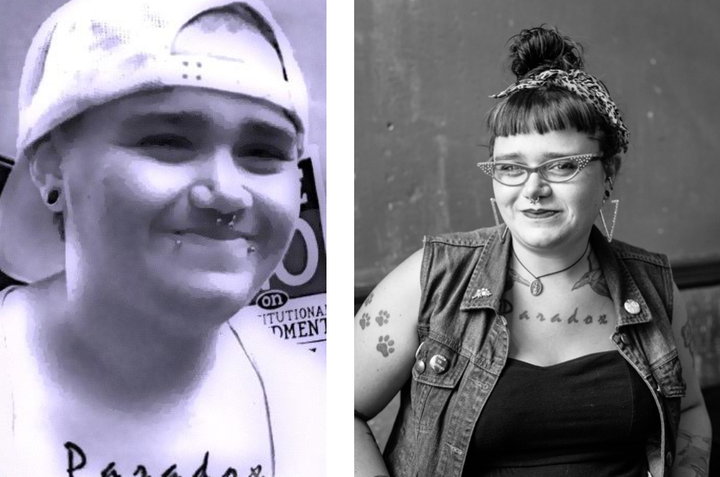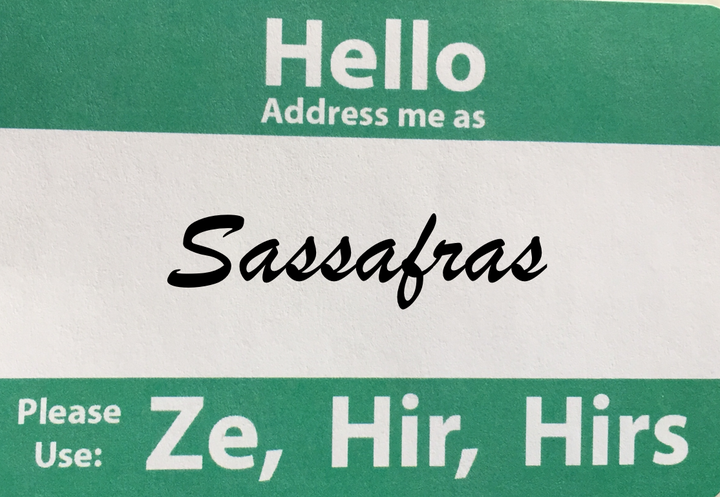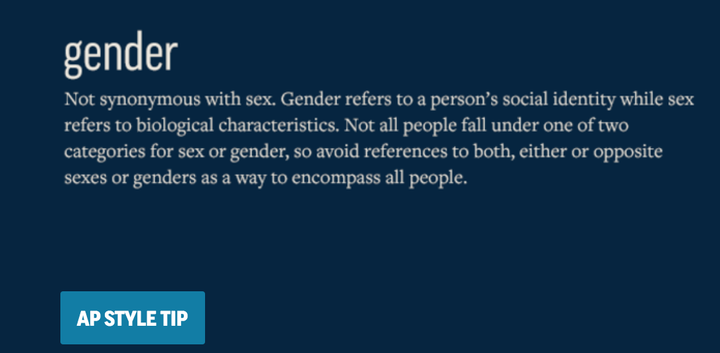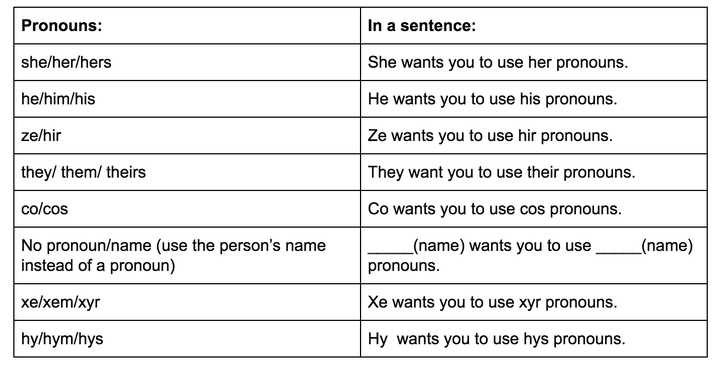I came out as genderqueer when I was 17 years old, and now at 33 I’ve now spent almost half my life as an out genderqueer person! For me being genderqueer means that I’m not a man or a woman, and that regardless of my presentation, my gender identity exists outside of the binary of female or male.

My gender history over the past sixteen years has included multiple social and physical gender transitions. I have lived in many gender presentations, and have used hormones to physically transitions several times. Over the years my gender presentation has been fluid from: butch, to transgender man, to bearded lady, to queer femme. The only consistency in my gender identity over the years has been genderqueer, and my non-binary pronouns: ze/hir.

Queering language is really important to me. when I first came out as genderqueer in the early 2000’s I learned about non-binary pronouns, and right away began using “ze/hir” as my pronouns. These were the same pronouns gender outlaw Kate Bornstein, transgender activist Leslie Feinberg, and so many other genderqueer folks I met were using to reflect our non-binary identities.

As a fiction author one of my main goals is to create queer stories for queer readers. For me this means writing a diverse representation of genderqueer/trans characters on the page. The characters in my novels unapologetically use a variety of pronouns. I’m equally committed to normalizing the presence of non-binary characters as I am to non-binary language in literature.
Last year The Merriam-Webster Dictionary added the words “genderqueer” and “Mx” which a non-binary honorific to replace “Mr.” or “Ms” to the dictionary!

This year The Associated Press Stylebook updated the guide to include the use of “they” as a non-binary singular pronoun. The AP does however encourages writers to try to avoid doing so, and to rephrase writing to use a name whenever possible. The updated Stylebook also explicitly doesn’t support usage of gender-neutral pronouns such as “ze.” Queering language is a work in progress.The AP does name that gender is not a binary, and is about identity- even running this tip on their homepage this morning!

Language like identities are constantly evolving. I understand that using non-binary pronouns might be challenging, but when someone says my pronouns are “too hard” for them to remember, what I hear is that you don’t value our friendship, the work that i’m doing in the world, or me as a person.
10 Tips About Using & Understanding Non-Binary or Genderqueer Pronouns:
- Normalize Pronouns - A great way to do this is including your pronouns in email signatures or on social media bios. This helps to normalize the idea that people shouldn’t just assume they can tell someone’s pronoun based on a the traditional gendering of a name.
- Ask - Ask everyone their pronouns, not just the person you think might be trans or non-binary. Make asking pronouns as natural as asking what someone’s name is when you meet.
- Effort - The only way to get better at using non-binary pronouns is to step outside of your comfort zones. Forget what you think you know about grammar, and make an effort to respect our identities by using non-binary pronouns.
- Practice- A rainbow of gender-neutral pronouns have been part of my regular spoken and written vocabulary for sixteen years. Using them is as natural to me as binary pronouns, but that didn’t happen overnight. The only way to not get flustered using non-binary pronouns is to practice, practice, practice!
- Don’t assume- You can’t tell a person’s gender identity or pronouns based on how they look. Gender presentation isn’t the same as gender identity, and neither presentation nor identity are a indicator of what pronouns someone uses. The only way to know what someone’s pronouns are is to ask. Also, don’t assume that someone’s pronouns are fixed. Gender is fluid, and their pronouns may (or may not) change over time.
- Include pronouns- Include PGP - Preferred Gender Pronoun or Personal Gender Pronoun (the latter being the most inclusive phrasing as doesn’t insinuate respecting someone’s pronouns is optional) in your ice breakers/go-arounds when you start a meeting. Are you involved with organizing a conference? Include a place for pronouns on your name tags/badges. You can even buy pre-made pronoun stickers
- Apologize- Mistakes happen. When you misgender someone say you are sorry, and fix your language moving forward. Don’t make a huge deal about your mistake and force the trans/non-binary/genderqueer person spend a lot of time and energy consoling you for misgendering them. The best apology is not doing it again.
- Non-binary greetings: Instead of saying “ladies” or “guys” to a group of people try to incorporate language that isn’t gendered like “folks,” “y’all,” “friends” etc. into your vocabulary
- Correct - When you hear someone use the wrong pronouns for a mutual friend correct them. Sadly, sometimes the only way to get people to respect non-binary pronouns is if they feel socially shamed into doing so. Part of being a good ally to non-binary, genderqueer, and trans people in your community is helping other people get our pronouns right.
- One size doesn’t fit all - As people become more comfortable and familiar with using the non-binary pronoun “they” I’ve noticed a trend that people will use it as a default pronoun for any non-binary person. “They” is an awesome pronoun, but it’s not mine. I feel just as misgendered by people referring to me as “they” as I do when they use “he” or “she.”
Need some help figuring out how to use non-binary pronouns? Here’s a simple guide:

